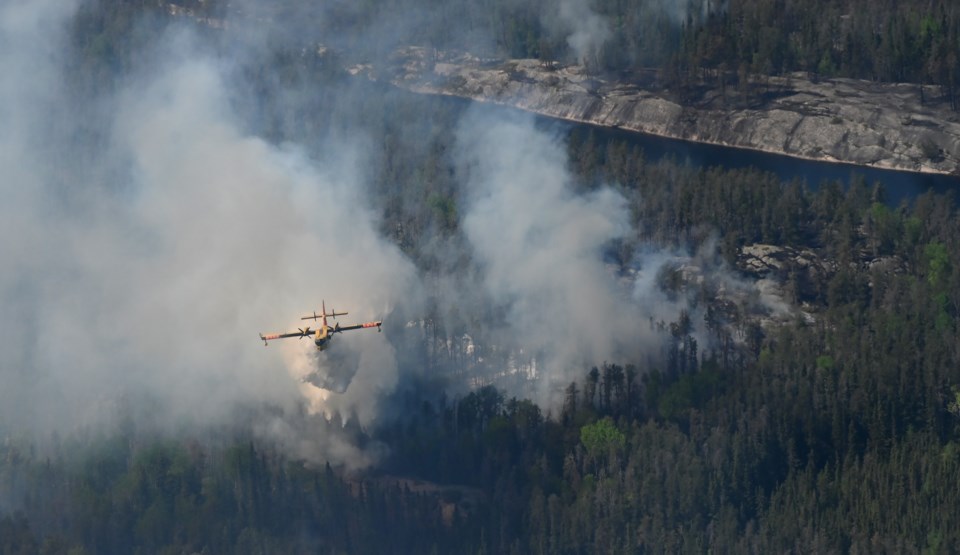KENORA — The Ministry of Natural Resources and national fire smoke forecasters say it could be a smoky weekend for much of the Northwest.
Smoke from multiple wildfires burning in Northwestern Ontario and across the Prairies have resulted in a succession of air quality alerts across much of the region. Environment Canada has been forecasting a brief reprieve for Thunder Bay and points east.
“As far as smoke drift is concerned in Northwestern Ontario, from this afternoon into Saturday morning, we're expecting areas generally located west of Atikokan in the southern portion of the region and areas to the west of Muskrat Dam further up north, to be impacted by smoke drifting from active fires,” said Isabelle Chenard, a fire information officer with the MNR’s Aviation, Forest Fire and Emergency Services.
Chenard said a swath of territory between Webequie to the north and Lake Nipigon to the south will also be impacted around the same time.
But from there, “we're expecting the smoke to drift further east and south into the province as the weekend goes on,” she continued.
“More of the region and the province will start to see smoke impacts later on into the weekend.”
An interactive fire smoke map produced by the Weather Forecast Research Team at the University of British Columbia is forecasting much of Northwestern Ontario, including as far east as the North Shore and points north, to see at least some level of elevated fine particulate matter into Sunday morning.
Fine particulate matter are respirable particles that can travel deeply into the lungs and which consist of a mix of things, including forest fire smoke. Health Canada says it can cause eye, nose, throat and lung irritation, wheezing, coughing and shortness of breath, decreased lung function and can aggravate lung and heart conditions like asthma and heart disease.
Closer to the fires themselves, intense smoke can also impact the visibility of water bombers and other firefighting aircraft.
“If there's a lot of smoke, let's say in the morning and the visibility is reduced, there may be a delay in a helicopter and aircraft operations over a fire,” Chenard said. “It depends on the situation.”
Remapping the boundaries of a fire as it shifts can also be impacted, she added, as that work is typically done from the air as well.
“The more smoke there is in the air, the harder it is to kind of see and remap a fire and it can delay remapping,” Chenard said.
With the current inventory of wildfires in the Northwest, the region is receiving help from abroad, including fire ranger crews from the Northeast, 100 firefighters and support staff from B.C. and a pair of CL-415 water bombers and an infrared scanning aircraft from Quebec, she said.
